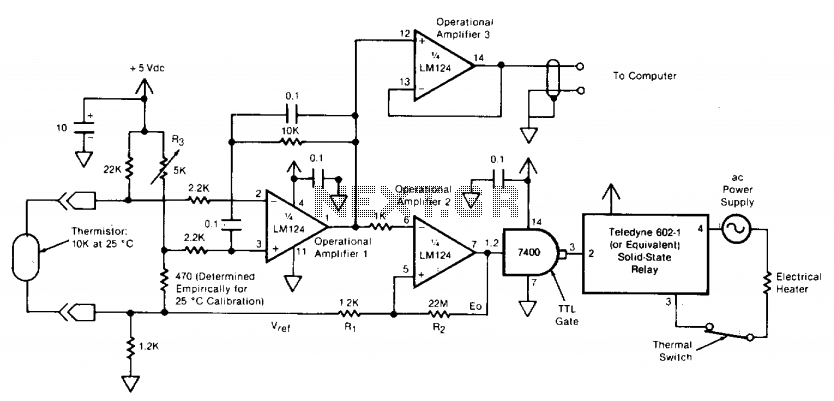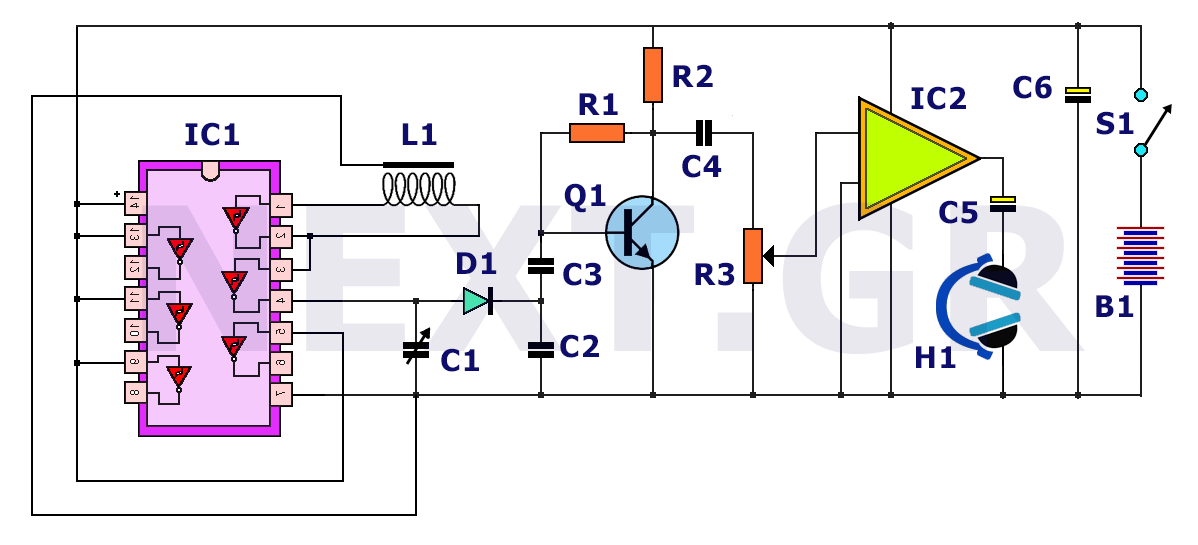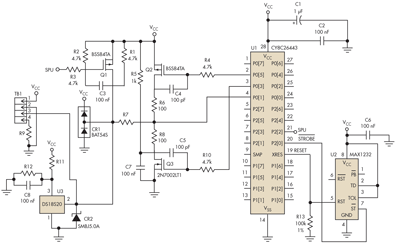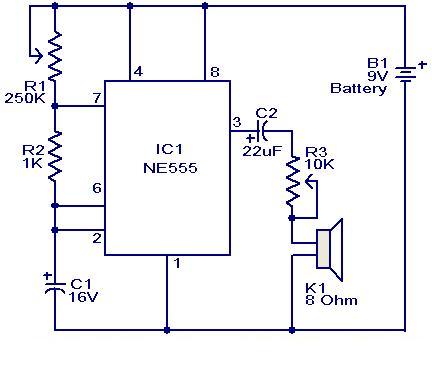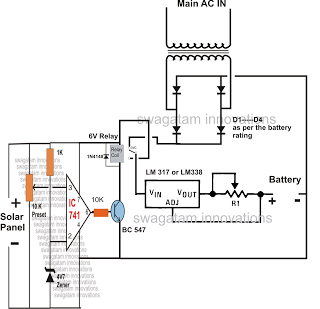
Fast charging circuit TEA1102
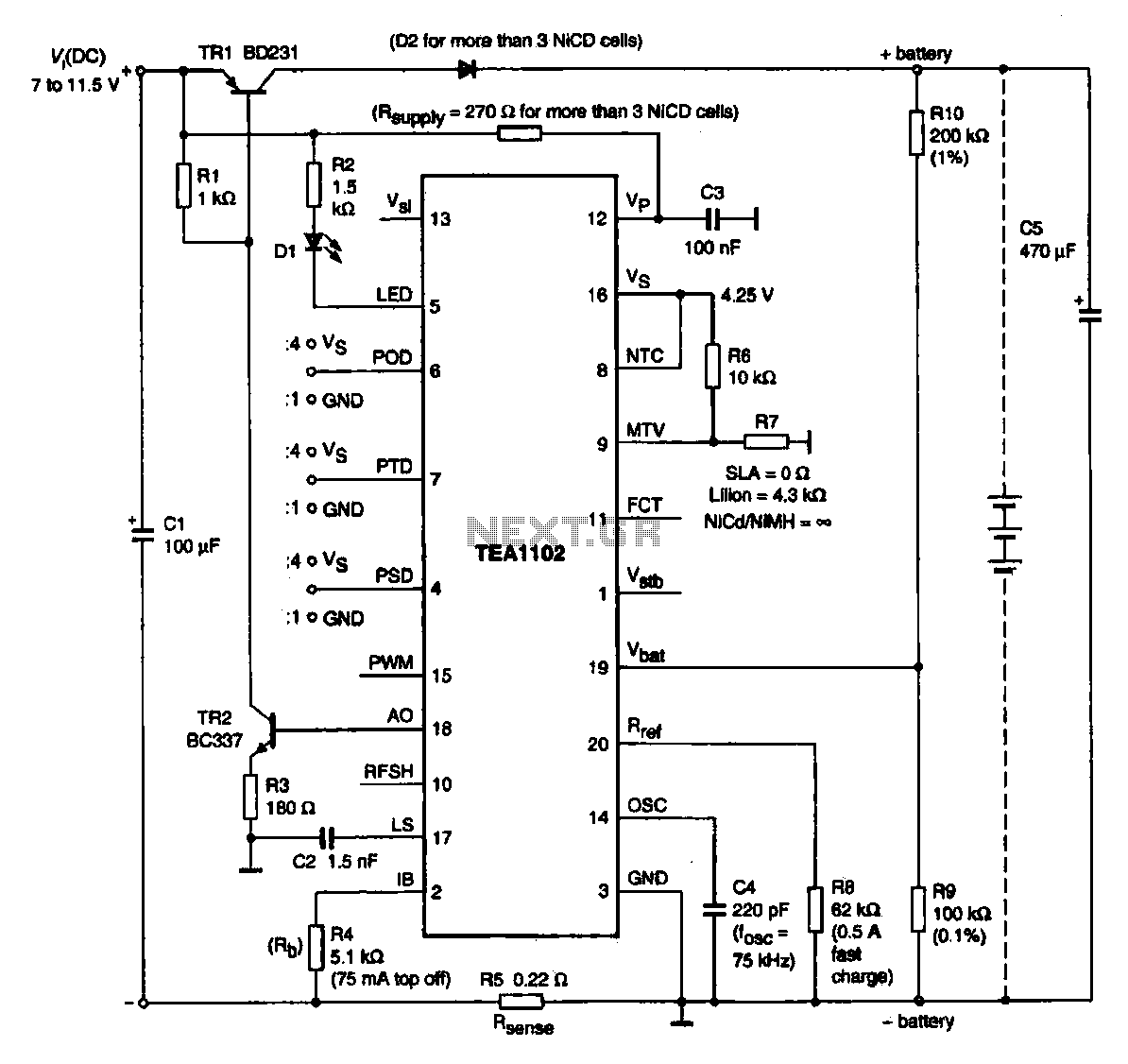
A fast charging circuit utilizing the TEA1102 controller is designed for various battery types. This circuit operates with a DC power supply voltage ranging from 7 V to 11.5 V and is compatible with nickel-cadmium, nickel-hydrogen, and lithium-ion batteries.
The fast charging circuit based on the TEA1102 is engineered to efficiently manage the charging process for multiple battery chemistries. The TEA1102 is a dedicated fast charge controller that offers a range of features to optimize charging performance. The circuit is designed to accept a DC input voltage between 7 V and 11.5 V, making it suitable for a variety of power sources.
The architecture of the circuit typically includes input protection components, such as diodes and fuses, to safeguard against overvoltage and reverse polarity. The TEA1102 controller is responsible for regulating the charging current and voltage, ensuring that the battery is charged efficiently and safely. It employs a constant current/constant voltage (CC/CV) charging algorithm, which is crucial for maintaining battery health and longevity.
In the case of nickel-cadmium and nickel-hydrogen batteries, the circuit can utilize temperature and voltage sensing to prevent overcharging, which can lead to battery damage. For lithium-ion batteries, the TEA1102 ensures that the charging process adheres to the specific requirements of lithium technology, including temperature monitoring and charge termination.
Furthermore, the circuit design may include additional components such as capacitors for filtering and stability, as well as indicators to show the charging status. By integrating these elements, the fast charging circuit not only enhances charging efficiency but also provides a robust solution for various battery applications in consumer electronics and industrial devices.Fast charging circuit (TEA1102) Shown is a chemical for a variety of battery fast charging circuit, which is based on fast charge controller TEA1102 nuclear charging circuit of the heart. DC power supply voltage of 7 V-11.5 V, can be nickel-cadmium, nickel hydrogen, lithium-ion battery.
The fast charging circuit based on the TEA1102 is engineered to efficiently manage the charging process for multiple battery chemistries. The TEA1102 is a dedicated fast charge controller that offers a range of features to optimize charging performance. The circuit is designed to accept a DC input voltage between 7 V and 11.5 V, making it suitable for a variety of power sources.
The architecture of the circuit typically includes input protection components, such as diodes and fuses, to safeguard against overvoltage and reverse polarity. The TEA1102 controller is responsible for regulating the charging current and voltage, ensuring that the battery is charged efficiently and safely. It employs a constant current/constant voltage (CC/CV) charging algorithm, which is crucial for maintaining battery health and longevity.
In the case of nickel-cadmium and nickel-hydrogen batteries, the circuit can utilize temperature and voltage sensing to prevent overcharging, which can lead to battery damage. For lithium-ion batteries, the TEA1102 ensures that the charging process adheres to the specific requirements of lithium technology, including temperature monitoring and charge termination.
Furthermore, the circuit design may include additional components such as capacitors for filtering and stability, as well as indicators to show the charging status. By integrating these elements, the fast charging circuit not only enhances charging efficiency but also provides a robust solution for various battery applications in consumer electronics and industrial devices.Fast charging circuit (TEA1102) Shown is a chemical for a variety of battery fast charging circuit, which is based on fast charge controller TEA1102 nuclear charging circuit of the heart. DC power supply voltage of 7 V-11.5 V, can be nickel-cadmium, nickel hydrogen, lithium-ion battery.
Warning: include(partials/cookie-banner.php): Failed to open stream: Permission denied in /var/www/html/nextgr/view-circuit.php on line 713
Warning: include(): Failed opening 'partials/cookie-banner.php' for inclusion (include_path='.:/usr/share/php') in /var/www/html/nextgr/view-circuit.php on line 713
